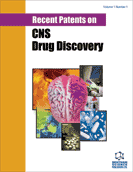Abstract
Several Voltage-Gated Sodium Channels (VGSC) are widely expressed on lymphocytes and macrophages but their role in immune function is still debated. Nevertheless, Na+ influx through VGSC is required for lymphocytes activation and proliferation, since these responses are blocked by Na+-free medium or by VGSC blockers. These effects may be mediated by the reduced intracellular Na+ levels, which in turn may impair the activity of Na+/Ca++ exchanger resulting in reduced intracellular Ca++ levels during lymphocyte activation. Furthermore, in Jurkat cell line VGSC appear to be involved in cell volume regulation, migration in artificial matrix and cell death by apoptosis. VGSC play a role in macrophage function as well, and VGSC blockers impair both phagocytosis and inflammatory responses. Several VGSC blockers have shown immunomodulatory properties in mice models, skewing the immune response toward a Th2- mediated response, while suppressing Th1-mediated responses, and VGSC already used in clinical practice are known to modulate immunoglobulin (Ig) levels both in mice and in humans. These effects suggest that VGSC blockers may find clinical application in the treatment of autoimmune and inflammatory disease. However, many of these drugs induce a number of severe side effects. The relevance of VGSC function in immune regulation suggest that the testing of newly patented VGSC blockers for their effect on immunity may be worthwhile.
Keywords: Antibody isotypes, immunomodulation, phenytoin, T-helper 2 cells, voltage-gated sodium channel
 46
46

